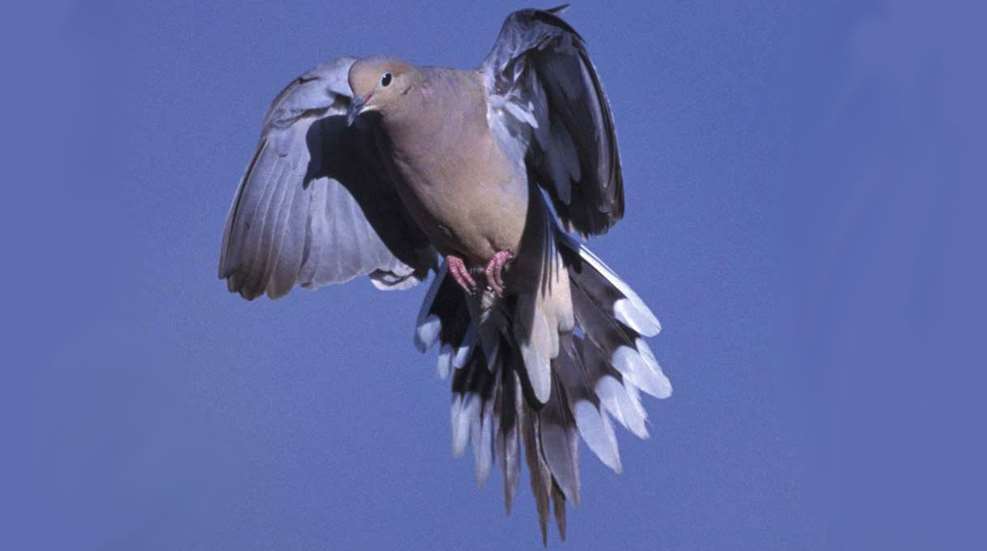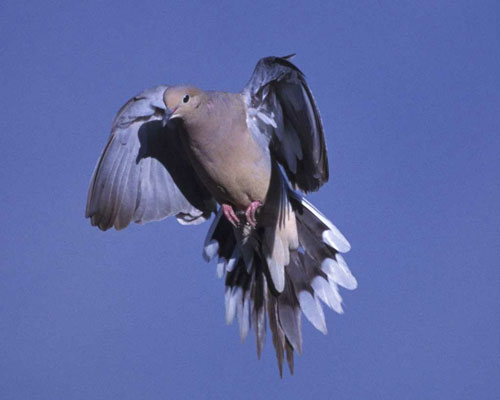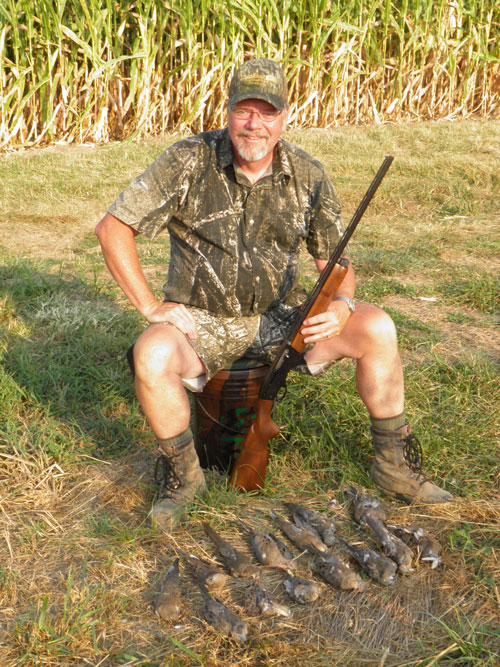
Flying targets are very difficult for most people, and dove are some of the most challenging of them all. With that in mind, let’s take a few minutes to ensure your shots count this year in the dove field. The fundamentals of shooting a shotgun are vital to becoming a successful dove hunter, as there are many things that contribute to actually hitting the target. You must avoid mental breakdowns and learn how to keep your mind from getting in the way of your fundamentals. In this article we will look in-depth at what those fundamentals are.
Stance
Your stance when shooting a shotgun should be different from shooting other guns. The placement of your feet is critical in having a smooth motion when taking a shot. For right-handed shooters, stand with your left foot in front of your right, about shoulder width apart or just under. Shift your weight slightly toward your lead foot to help brace yourself for the recoil of the shotgun.
If the bird is coming directly at you, or going away, this is the perfect stance. Unfortunately, in the real-world birds come from every angle possible. Remember to shift your feet and open your shoulders in the direction the bird is coming from. By doing this you will gain a greater kill zone and have a more fluid swing. For left-handed shooters the stance is exactly opposite.
Remember, if you pull the trigger with your right hand, the right foot goes back and if you pull the trigger left-handed, the left foot goes back. A good stance and good footwork are the first steps to shooting a shotgun accurately.
It is inevitable that during a dove hunt there will times when your stance is off because of dove surprising you. They will come from all angles and sometimes you will not see them until you are already behind the eight ball. That’s okay. If you have the time to get your feet right, do it. In the times you don’t, your other mechanics will be more critical in making the shot.
Mount

This is simply how you place the shotgun against you shoulder and prepare to shoot the bird. The stance and mount go hand in hand, and are done almost simultaneously, especially when dove hunting. The stock of the shotgun goes in the pocket of your shoulder slightly on the pectoral muscle.
Keep it very tight as this will limit the amount of bruising from the recoil. Tilt your head slightly so that your eyes are looking down the barrel of the shotgun. The top of the stock should be touching the side of your jawbone. Your off hand (the one not pulling the trigger) supports the fore-end of the gun.
Again, it easy to get a good mount when target shooting, but when dove hunting it is very easy to have a bad mount when you are hurrying to get a shot off. I cannot tell you how many times I have ended up with a bruised cheekbone or shoulder because of a bad mount. Doing this increases the difficulty of the shot dramatically.
When you begin to take a shot getting your mount right ensures you are seeing the bird from the right perspective and the barrel is at the correct angle, which in turn increases accuracy and consistency. The bottom line? It’s worth the extra split second to get it right.
Eyes
You would think this is pretty self-explanatory. Most shotgunners say to shoot with both eyes open. Unlike rifles and pistols where you seldom shoot at a moving target, all of your shots on dove will be moving. I am going to give you what some would call bad advice, but it works for me. I close one eye on shots that are straight on, either going away or coming at me. These shots require little barrel movement and usually require a straight shot at the bird, so basically aim and shoot. That is why I close one eye.
I will admit though, these types of shots are very rare when hunting dove. When shooting crossing shots (and all others), I leave both eyes open. I find with one eye closed on a crossing shot I am almost always behind the bird. A good way to find out what works best for you is shooting skeet.
Shoot a round leaving both eyes open on all the stations, then closing one eye on all stations and evaluate your successes and failures. Whatever you decide works best, do not change it. Consistency is key, do the same thing every time.
Swing
Imagine, you have spotted a bird, you’ have got your feet right, shouldered the gun and have your eyes set; now all you have to do is shoot, right? Wrong. What you have to do is get your swing right. Here muzzle speed and finding the right line is vital and is different on virtually every shot.
If a dove is crossing but going away, your muzzle speed will be slower than a dove just crossing. Finding the right line simply means following the line the dove is on. The last component in your swing is your follow through.
Just like any good golfer, basketball player or bowler, you must follow through your shot. Do not stop on the target. Keep the swing and line even after you shoot. Doing this will keep you from stopping on the target and shooting behind it.
The mechanics of your swing are something that must be practiced; once again shooting skeet is a great way to do this. There seems to be a lot to shooting a shotgun, but all these things happen in a blink of an eye. Practice, practice, practice.
There are tons of articles on the different types of shotgunners, but the most important thing is to find out what works for you and stay consistent. The last thing you want to do is try to change your form in the middle of a hunt. Do not let negativity set in; it can destroy everything you have practiced and turn a fun time into an aggravating experience. Stick to your fundamentals, be consistent, and always have fun.
Meat Preservation
Now that you know to hit dove, let’s look quickly at how to prepare them for the table. Correctly preparing any wild game or wild birds is an easy process if you are careful from start to finish. A great dove meal begins in the field, as soon as you shoot the birds. An early September dove hunt can be a pretty warm event. I have hunted dove when the temperature was well over 90-degrees. It is very important to take care of your birds quickly in high temperatures.
Please note, I do not suggest that you stop shooting after every couple birds to clean them. I do, however, recommend that you begin a cooling process of your dove as soon as possible. The very best idea is to take a small cooler with ice into the field with you. This will not only give a source for a cold drink during your hunt, but will also allow you to drop your birds in a plastic bag and get them on ice almost immediately. This simple step in the field will help preserve the meat’s natural flavor and tenderness.
When you do get finished hunting and cleaning your dove, get the breasts back on ice as soon as you are done. Be sure the breasts are clean and rinsed of any blood or feathers. Also remember to tag your bag of dove with your name and the date you shot them before you put them in your freezer.

Preparation and Cooking
When it comes to cooking a great dove dinner, the steps are easy and well worth doing. All-too-many people feel the two or three bites you get of a dove breast are just not worth it. I whole-heartedly disagree. When prepared properly, a dove meal is about as good as it can get.
To start, marinate your dove overnight in Italian salad dressing in the refrigerator. On the day of cooking, cut bacon slices in two and wrap half a piece of bacon around each breast. Attach the bacon with a toothpick. Over a medium heat on either a gas or charcoal grill, cook the dove until the bacon is done, almost crispy. If done correctly, there will be no need to turn the breasts during grilling.
Tips to remember are that if the fire is too hot, the bacon will cook and burn before the dove is done. If your fire is not hot enough, the bacon nor the dove will cook through-and-through. Take your time, get the right heat, and watch the faces of those eating your dove dinner light-up with enjoyment.





































